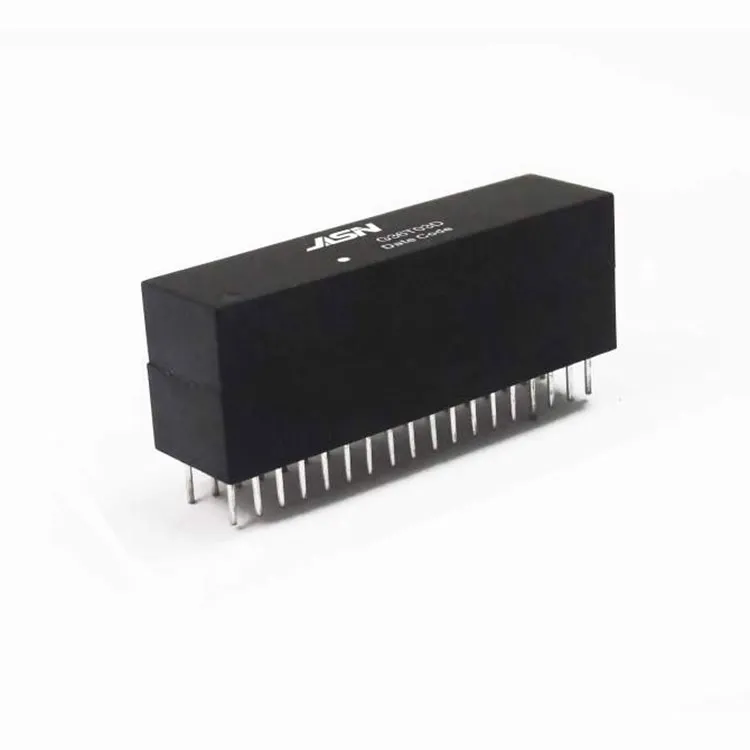Understanding Network Transformers: The Backbone of Modern Communication Systems
2024-10-18
In an era where seamless communication is paramount, network transformers play a crucial role in ensuring the stability and efficiency of various electronic devices and systems. From telecommunications to data centers, understanding network transformers and their functions can enhance your appreciation for the technology that powers our connected world. In this blog, we will explore what network transformers are, how they work, and their significance in modern communication systems.
What is a Network Transformer?
A network transformer is a type of electrical transformer specifically designed for use in telecommunications and data transmission systems. These transformers are essential for isolating and matching impedance between different network components, ensuring optimal signal integrity and minimizing loss during transmission. Network transformers are commonly found in various applications, including:
- Telecommunications Systems: Used in telephone lines and internet connections to maintain signal quality.
- Audio Equipment: Ensures proper impedance matching for microphones and speakers.
- Data Communication: Facilitates effective signal transmission in local area networks (LANs) and wide area networks (WANs).
How Do Network Transformers Work?
At their core, network transformers operate on the principles of electromagnetic induction. They consist of two or more wire coils (windings) wrapped around a magnetic core. When an alternating current (AC) passes through one winding (the primary winding), it creates a magnetic field that induces a voltage in the second winding (the secondary winding). This process allows for voltage transformation, impedance matching, and isolation of different parts of a network.
Key Functions of Network Transformers:
1. Impedance Matching: Different network components often have different impedance levels. Network transformers help match these impedances, which is crucial for maximizing power transfer and minimizing signal reflection.
2. Signal Isolation: Network transformers provide electrical isolation between components, protecting sensitive devices from voltage spikes and reducing noise in the system.
3. Voltage Transformation: By adjusting the turns ratio between the primary and secondary windings, network transformers can step up or step down voltage levels as needed.
4. Noise Reduction: Network transformers can filter out unwanted signals and interference, ensuring cleaner and more reliable communication.
Types of Network Transformers
Network transformers come in various types, each suited for specific applications. Here are some common types:
1. Isolation Transformers
These transformers provide electrical isolation between the input and output, protecting equipment from electrical shocks and noise. They are often used in sensitive electronic applications.
2. Audio Transformers
Designed specifically for audio applications, these transformers ensure proper impedance matching between microphones, amplifiers, and speakers, delivering high-quality sound without distortion.
3. RF Transformers
Radio frequency (RF) transformers are used in high-frequency applications, such as telecommunications and broadcasting. They ensure efficient signal transmission and minimize losses in RF circuits.
4. Power Transformers
While primarily used in power distribution, power transformers can also serve in network applications to regulate voltage levels and ensure stability.
Importance of Network Transformers in Modern Communication
The significance of network transformers in today's communication landscape cannot be overstated. Here are a few reasons why they are essential:
1. Enhanced Signal Quality
By ensuring proper impedance matching and filtering out noise, network transformers enhance the quality of signals transmitted through networks, resulting in clearer audio and video communications.
2. Increased System Reliability
With the ability to isolate components and protect against voltage spikes, network transformers contribute to the overall reliability of communication systems, reducing downtime and maintenance costs.
3. Support for High-Speed Data Transmission
As data transmission speeds continue to increase, network transformers are crucial for maintaining signal integrity, allowing for faster and more efficient communication.
4. Versatility Across Applications
From telecommunications to audio equipment and data centers, network transformers are versatile components that can be found in various applications, demonstrating their importance in multiple industries.
Conclusion: The Unsung Heroes of Connectivity
Network transformers may not be the most glamorous components in the realm of technology, but they are undoubtedly some of the most vital. Their ability to match impedance, isolate signals, and enhance communication quality makes them essential for the smooth functioning of modern communication systems.
As technology continues to advance, the role of network transformers will only grow in importance, supporting faster, more reliable, and efficient communication networks. Whether you’re a tech enthusiast, a telecommunications professional, or simply someone interested in understanding the components that power our connected world, appreciating the significance of network transformers is key to grasping the intricacies of modern communication systems.



